Intravenous to oral switch therapy in cancer patients with CLABSI due to MRSA
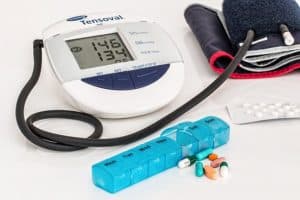
We assessed the effectiveness of switching from intravenous to oral antimicrobial therapy in cancer patients with CRBSI due to methicillin-sensitive S. aureus (MSSA)” Itoh et al (2018). Abstract: The most common complication in cancer patients is catheter-related bloodstream infection (CRBSI), of which Staphylococcus aureus is a common pathogen. Although S. aureus CRBSI patients are recommended […]
Review of a pocket-sized ultrasound device for internal jugular puncture

The aims of our study were to compare the performance of experienced emergency physicians for internal jugular vein puncture using a conventional ultrasound device versus a pocket-sized ultrasound in a training model” Chetioui et al (2018). Abstract: INTRODUCTION: The aims of our study were to compare the performance of experienced emergency physicians for internal jugular […]
Peripherally inserted central catheter-related complications in infants

We reviewed the infants in the Xin Hua Hospital to determine the incidence of catheter-related bloodstream infections (CRBSIs) as well as other complication rates” Huang et al (2018). Abstract: BACKGROUND AND OBJECTIVES: For delivery of parenteral nutrition (PN), long-term central access is often required in infants with intestinal failure (IF). Compared to central venous catheters […]
Patient-specific treatment recommendations in guidelines for hemodialysis vascular access
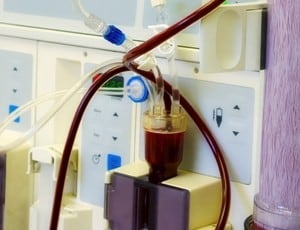
Our findings show that current clinical practice guidelines for hemodialysis vascular access lack patient-specific recommendations” Queeley et al (2018). Abstract: BACKGROUND: Hemodialysis is a procedure that requires efficient removal and return of blood to a patient’s body. Despite being a life-sustaining process, hemodialysis is associated with morbidity, mortality, and high societal costs. A significant part […]
Multidisciplinary approach to improve sepsis outcomes

After implementation, we noted improvement in appropriately timed serum lactate, 88.6% versus 70.8% (p = .008) with no significant improvements in blood cultures, antibiotic administration, or mortality” MacMillan et al (2018). Abstract: Severe sepsis and septic shock cause significant morbidity and mortality with health care costs approximating $17 billion annually. The Surviving Sepsis Campaign 2012 […]
Tetrasodium EDTA Is effective at eradicating central venous catheter biofilm

Clinicians are searching for better ways to extend the working life span of implanted CVADs, by preventing colonization and reducing the risk of bloodstream infections” Liu et al (2018). Abstract: Central venous access devices (CVADs) are an essential component of modern health care. However, their prolonged use commonly results in microbial colonization, which carries the […]
Group style central venous catheter education using the GLAD model

This study aimed to examine the impact of group-based central venous catheter education (CVC) on the knowledge, skill and comfort of caregivers, length of stay (LOS) related to initial CVC placement and 30-day return hospital visit for central line associated blood stream infections (CLABSI)” Hicks et al (2018). Abstract: Purpose: This study aimed to examine […]
Multimedia patient decision aid supports PICC placement informed consent

The multimedia PtDA is an effective standardized, structured, self-paced learning tool to supplement the consent process of the PICC and improve patient satisfaction with the process, knowledge recall, and knowledge retention” Sowan et al (2018). Abstract: BACKGROUND: Informed consent is a complex process to help patients engage in care processes and reach the best treatment […]
Overview of the venous cutdown technique for vascular access

The venous cutdown technique is a surgical procedure to gain venous access when relatively less invasive percutaneous procedures such as the Seldinger technique (percutaneous access), ultrasound-guided venous access, and intraosseous vascular access have failed” Lee and Bhimji (2018). Excerpt: The establishment of venous access is essential to the treatment and resuscitation of both the medically […]
Umbilical cord simulator model for emergency umbilical catheter placement training

This technical report describes the creation and use of a real human umbilical cord simulator model for emergency umbilical venous catheter placement training” Sawyer et al (2018). Abstract: Emergency umbilical venous catheter placement is a critical procedure during newborn resuscitation. Providing training in this high-acuity and low-frequency procedure is important to optimize the skills of […]
Benchmark for frequency and duration of infusion pump alarms

The purpose of this study was to establish a baseline for infusion pump alarm frequencies and duration in the hospital setting. Frequency and duration of alarms across 29 hospitals using 11,410 infusion pumps revealed 987,240 alarms associated with 568,164 infusions during a consecutive 60-day period” Vitoux et al (2018). Abstract: Reduction of clinical alarms is […]
Thermotherapy for improving the vascular access cannulation procedure

The aim of this study was to evaluate the analgesic effect of thermotherapy on vascular access cannulation” Tapia González et al (2018). Abstract: INTRODUCTION AND OBJECTIVES: Vascular access is essential to perform an adequate hemodialysis. Needle cannulation in vascular access is usually painful. There is little scientific evidence on the analgesic effect of thermotherapy. The […]
Implementation of a medication safety bundle and barcode-based safety system

Anaesthetic medication administration errors are a significant threat to patient safety. In 2002, we began collecting data about the rate and nature of anaesthetic medication errors and implemented a variety of measures to reduce errors” Bowdle et al (2018). Abstract: BACKGROUND: Anaesthetic medication administration errors are a significant threat to patient safety. In 2002, we […]
Awareness in anesthesia due to failure of intravenous syringe pump

Awareness is the recovery of consciousness during general anesthesia. It occurs when patients under general anesthesia receive inadequate anesthetic medications to maintain unconsciousness during surgery. Equipment failure is a common cause of intraoperative awareness” Niu et al (2018). Abstract: RATIONALE: Awareness is the recovery of consciousness during general anesthesia. It occurs when patients under general […]
Safety of patient-controlled analgesia after surgery in children

Patient-controlled analgesia (PCA) is common practice for acute postoperative pain management. Postoperative PCA use decreases pain intensity and improves patient satisfaction when compared to non-PCA routes of medication administration” Ocay et al (2018). Abstract: Patient-controlled analgesia (PCA) is common practice for acute postoperative pain management. Postoperative PCA use decreases pain intensity and improves patient satisfaction […]
Role of transfusions in the development of hospital-acquired UTI
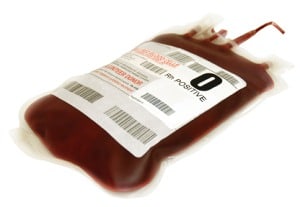
Urinary tract–related bloodstream infection (BSI) is associated with substantial morbidity, mortality, and financial costs. We examined the role of red blood cell (RBC) transfusions on developing this condition among US Veterans” Greene et al (2018). Reference: Background: Urinary tract–related bloodstream infection (BSI) is associated with substantial morbidity, mortality, and financial costs. We examined the role […]
Central venous catheter-related venous thrombosis in children

In this review, we focus on CVC-related VTE in children with end-stage renal disease (ESRD) undergoing hemodialysis, a population in whom the provision of renal replacement therapy is a lifelong undertaking” Mandel-Shorer et al (2018). Abstract: Despite the high rate of central venous catheter (CVC)-related venous thromboembolic (VTE) complications and long-term sequelae, CVCs remain a […]
Central venous occlusive disease in patients with end-stage renal disease
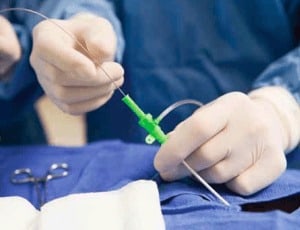
Central venous occlusive disease is frequently observed in patients with end-stage renal disease” McFall and Lu (2018). Abstract: Central venous occlusive disease is frequently observed in patients with end-stage renal disease. Venography remains the gold standard for diagnosis, but intravascular ultrasound is a potentially beneficial adjunct that may positively influence intervention. You may also be […]
Maintaining lower limb access with the HeRO device

Central venous catheters (CVC) remain a mainstay of vascular access particularly for incident patients, but lead to central vein stenosis (CVS) in up to 1 in 6 patents” Madurska et al (2018). Abstract: Central venous catheters (CVC) remain a mainstay of vascular access particularly for incident patients, but lead to central vein stenosis (CVS) in up […]
Effect of central venous catheter priming with calcium during CRRT

During citrate-based Continuous Renal Replacement Therapy (CRRT), an infusion of calcium is necessary to replace the calcium lost in the effluent. The replacement takes place through a central venous catheter (CVC) that is primed with saline solution” Roveri et al (2018). Abstract: During citrate-based Continuous Renal Replacement Therapy (CRRT), an infusion of calcium is necessary […]
Options for difficult central venous cannulation insertion?
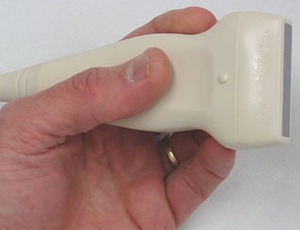
A commonly encountered difficulty during US-guided cannulation is the small lumen of the vessel (especially internal jugular vein) in patients who are volume deficient or have a history of multiple cannulations” Dhiman et al (2018). Extract: “A commonly encountered difficulty during US-guided cannulation is the small lumen of the vessel (especially internal jugular vein) in […]
Evaluation of oral anticoagulants for the treatment of cancer-associated thrombosis

Cancer is associated with an increased risk of venous thromboembolism of four to sixfold. Cancer-related interventions such as chemotherapy, hormonal therapy and indwelling central venous catheters also increase the risk of venous thromboembolism” Franco-Moreno et al (2018). Abstract: Cancer is associated with an increased risk of venous thromboembolism of four to sixfold. Cancer-related interventions such […]
Impact on mortality of time of central catheter removal in candidemia

Evaluate the effect of time to CVC removal, early (within 48h from the diagnosis of candidemia) vs. removal at any time during the course of candidemia, on the 30-day mortality” Nucci et al (2018). Abstract: BACKGROUND: The impact of central venous catheter (CVC) removal on the outcome of patients with candidemia is controversial, with studies […]
Review of interhospital transfer of children in septic shock

To determine the factors that influence the decision to transfer children in septic shock from level II to level I pediatric intensive care unit (PICU) care” Odetola et al (2018). Abstract OBJECTIVE: To determine the factors that influence the decision to transfer children in septic shock from level II to level I pediatric intensive care […]
Safety interventions lower radiation doses during central venous line placement in children
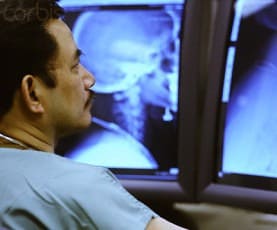
The purpose of this study was to reduce radiation exposure during pediatric central venous line (CVL) placement by implementing a radiation safety process including a radiation safety briefing and a job-instruction model with a preradiation time-out” Choi et al (2018). Abstract: PURPOSE: The purpose of this study was to reduce radiation exposure during pediatric central […]
Ultrasound peripheral IV catheter insertion reduces central line placement

Our primary objective was to determine the proportion of patients that required CVC after USPIV. Our secondary objective was to determine if classic risk factors for difficult vascular access were predictive of future CVC placement” Pare et al (2018). Abstract: Objectives: Ultrasound guided peripheral intravenous catheters (USPIV) are frequently utilized in the Emergency Department (ED) […]
What are the main reasons for rejection of haematology phlebotomy specimens?

The aim of this study was to determine the frequency and reasons for rejected haematology specimens, preanalytical variables which may affect specimen quality, and consequences of rejection, and provide suggestions on monitoring quality indicators as to obtain a quality improvement” Ye et al (2018). Abstract: INTRODUCTION: Specimen adequacy is a crucial preanalytical factor affecting accuracy […]
Increased mortality and adverse events in older blood transfused trauma patients

The transfusion of older packed RBCs may be harmful in critically ill patients. We seek to determine the association between packed RBC age and mortality among trauma patients requiring massive packed RBC transfusion” Jones et al (2018). Abstract: Study objective: The transfusion of older packed RBCs may be harmful in critically ill patients. We seek […]
Review of ultrasonography in Italian anesthesiology

The appropriate training in the use of ultrasound in anesthesia, intensive-care medicine, and pain therapy should be implemented in south of Italy to make uniform the widespread of ultrasonography in anesthesia, in all Italian regions” Fusco et al (2018). Abstract: PURPOSE: In recent years, ultrasound has seen a rapid development with numerous applications in anesthesia, […]
Reducing need for PICC placement with short course IV antibiotics

Post-cholecystostomy outcomes were comparable between short-course and long-course antibiotics, consistent with emerging literature supporting short-course antibiotics for intra-abdominal infection with source control” Walker et al (2018). Abstract: BACKGROUND: Current guidelines do not specifically address optimal antibiotic duration following cholecystostomy. This study compares outcomes for short-course (

